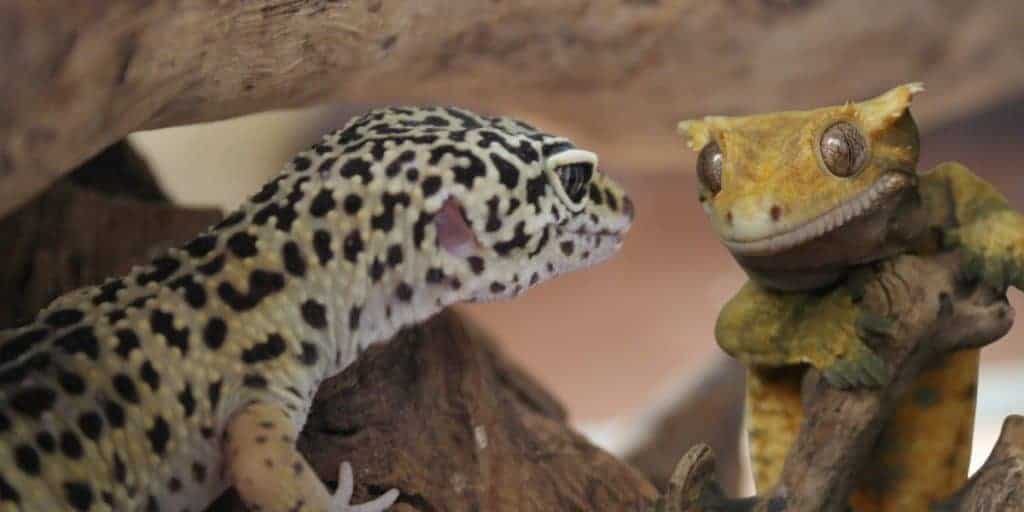Both Leopard Geckos and Crested Geckos are low-maintenance pets, which make them attractive for new reptile owners.
Since they are both species of gecko, people new to the hobby will often ask if they could get one of each and keep them in the same enclosure.
The simple answer is no, you cannot keep Leopard Geckos and Crested Geckos together in the same enclosure. They are from separate parts of the world with different environmental conditions with different temperature, humidity, habitat and dietary requirements.
In addition, whether the same species or not, geckos are generally solitary creatures and do not do well with others.
Now that you know the answer, it is important to learn why these two kinds of reptiles cannot live together. Read on!
Leopard Geckos and Crested Geckos are from different parts of the world
This is the main, overarching reason why Leopard Geckos and Crested Geckos cannot be housed together.
Because they belong to different regions of the world, their habitat, dietary behavior, and adoption to temperature and humidity are very different. The general rule of thumb is that reptiles belonging to different territories cannot be kept within the same enclosure.
Leopard geckos natively belong to Afghanistan, Pakistan and some regions of Iran and India with hot (up to 50°C), dry, desert-like conditions.
Whereas on the other hand, crested geckos are native to southern New Caledonia, a small French semi-tropical island located off the east coast of Australia where the temperatures are consistent throughout the year with an average of 24°C.
Different dietary requirements
There are several environmental, morphological, and dietary factors that prevent both Crested Geckos and Leopard Geckos from living together.
For instance, Crested Geckos are reptiles that feed on both insects and fruits. That’s why they are called omnivores species.
In contrast, Leopard Geckos are insectivores and do not eat fruits and vegetables. They only eat insects, such as crickets, waxworms, and mealworms.
While reptiles can have similar digestive structures, but there are also differences.
For example, Leopard Geckos have a smaller intestinal structure than Crested Geckos, which prohibit them from eating fruits.
Environmental habitat
As mentioned earlier in the article, Leopard Geckos are native to South Asian territories, and they are mostly found in Afghanistan, Iran, Pakistan, and India. These territories are categorized as arid and semi-arid regions.
Compared to Leopard Geckos, Crested Geckos are tropical lizards native to the forests of New Caledonia. They don’t live on the ground like Leopard Geckos. Instead, they are an arboreal species and more adapted to reside on trees and foliage.
Both Leopard Geckos and Crested Geckos are nocturnal reptiles, which means they are mostly active at night and usually hide themselves from the heat during the day. Unlike Bearded Dragons, heat lamps are not normally required for Leopard or Crested Geckos.
Temperature and humidity
Both Leopard Geckos and Crested Geckos can be kept at similar temperatures, however naturally Leopard Geckos can be kept quite a bit warmer.
However, the humidity requirements of both gecko are significantly different. Leopard Geckos require a dry, low humid environment whereas Crested Geckos require higher humidity. It is worth noting however that Leopard Geckos will occasionally require higher humidity when they are shedding and a hide containing damp sphagnum moss is highly recommended.




